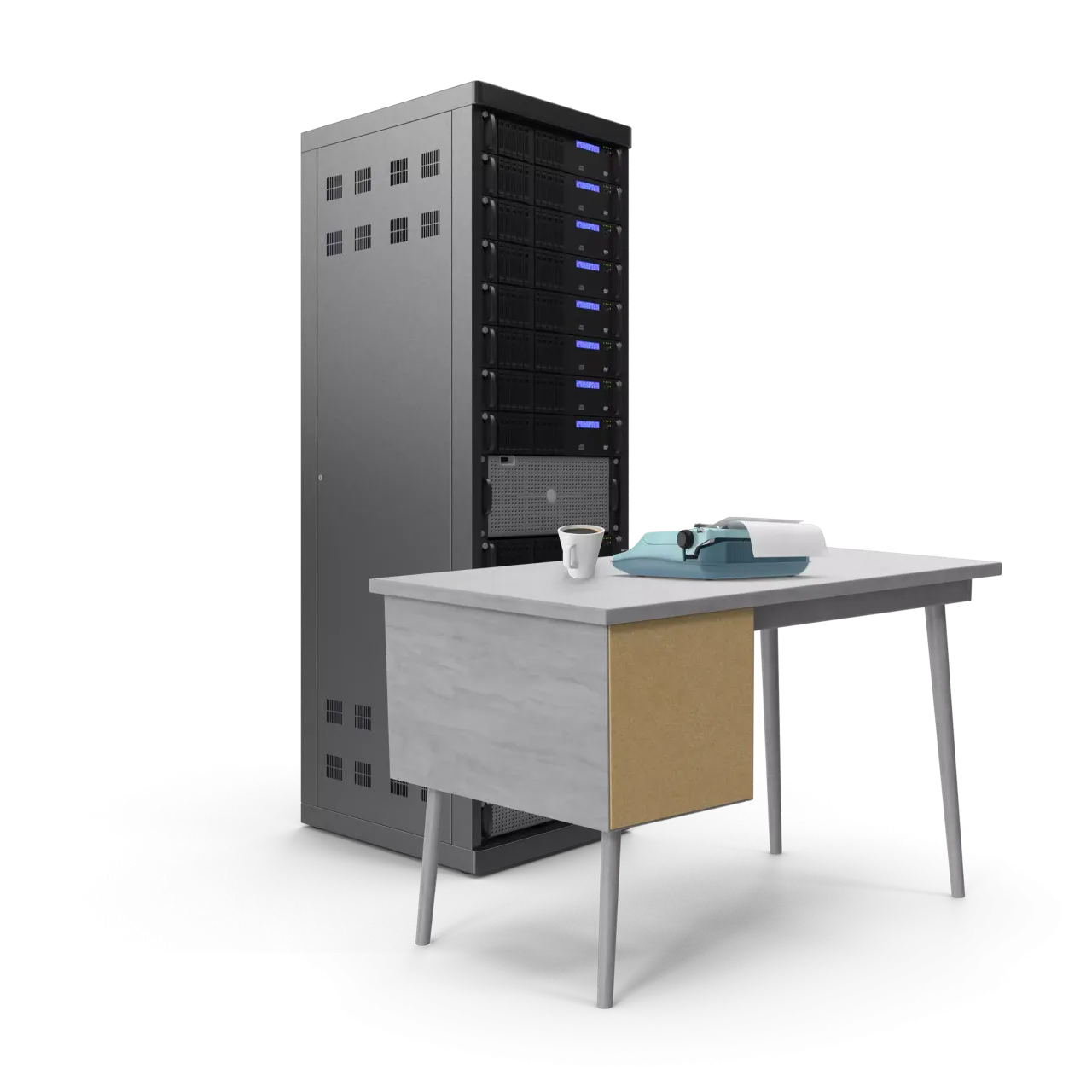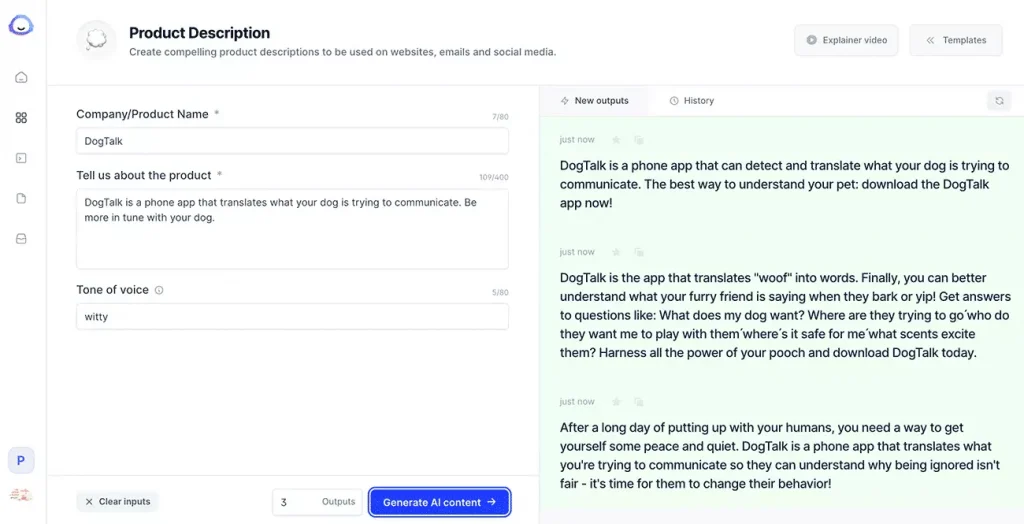Innovation Alphabet
GPT
In a nUtshell
The Generative Pre-Trained Transformer (GPT) is a writing algorithm capable of producing texts of exceptional quality, almost indistinguishable from any human output. It only takes very small inputs to set the system in motion: it is based on deep learning and fed with over 500 GB of text information collected from immense digital archives such as Wikipedia and Common Crawl. I mean, are you sure this quickcard was written by a human being?


storyline
In 2020, OpenAI‘s GPT-3 language model came to market and it still is the current version of the software. It has a giant neural network of 175 billion synapses and uses language patterns and machine learning technology to enhance texts or create completely new ones.
But before long, OpenAI is set to release GPT-4. We don’t know yet exactly what its features will be, but we can imagine that it will be much more powerful. For example, the possibility of GPT-4 being multimodal — such as accepting audio, text, image, and even video inputs — is anticipated.
Meanwhile, in November 2022 OpenAI introduced ChatGPT, a model which interacts in a conversational way. The dialogue format makes it possible for ChatGPT to answer followup questions, admit its mistakes, challenge incorrect premises, and reject inappropriate requests.
Application Fields
• Marketing: Being able to produce messages that look entirely human, GPT supports marketing activities. In fact, it allows copywriters to focus on the quality of content, easing their workload while still losing absolutely nothing in terms of quality.

• Customer Care: By producing human-like texts, GPT can also help digital customer care activities and solutions. In fact, it can suggest the best answers in a very short period of time.
• Sales: GPT is ideal for those sales funnels that involve communications via e-mail, social media, or any other written form, because it optimizes the quality and the content of texts created specifically for the sales area.
Do you have a Strategy & Innovation challenge to tackle? Let’s face it. Together.
C-levels from these companies (AND MORE) relied on my expertise to overcome thEIR CHALLENGES IN THIS AREA. And You can, too.
Can I help you?Business Functions
• GPT in support of electronics and computer science
GPT technology is implemented on Microsoft Power Apps, a platform for low-code application development. This enables even small businesses to program new digital tools, such as e-commerce sites or applications, in a much simpler and more intuitive way, using a no-code approach (creating software or tools without having to know programming languages but only through a visual interface) to ask, for example, the program to “find customers whose subscription has expired”.
• GPT in support of software
Data analytics platform SeekWell has adopted the highly advanced writing algorithm to use as a translator in programs that employ the SQL programming language. By providing a simple instruction and asking questions as if you were addressing a colleague, GPT translates the transmitted input into the required code or information.

• GPT in support of informatics and services
Founded in October 2020, Copysmith is an Artificial Intelligence platform that offers digital solutions for the creation of marketing campaigns. Copy, templates, blog ideas – these are just some of the services that the software is able to offer, mainly due to the “linguistic” contribution of GPT.
Stay in wonderland
Let me show you how deep the rabbit hole goes.
Check out more of the Innovation Alphabet:

3D Printing
3D Printing
“3D printing” is a process carried out by an electronic device which, instead of resorting to the canonical ink, it molds almost any kind of material: from concrete to living tissue, most usually plastic, but also metal. And the operating principle is similar to that of a traditional printer. The creation of three-dimensional models can lead to the redesign of a company’s production capabilities.
Dive In
5G
5G
5G is the new frontier of cellular telephony. It was designed to improve (or completely replace) previous generations of mobile networks. The 5th generation features lower latency, ensuring flawless performance of business applications and many other digital experiences – thus enabling the new cultural generations to furiously play Fortnite away from home.
Dive In
Advanced Analytics
Advanced Analytics
The term “Advanced Analytics” refers to the ability to autonomously or semi-autonomously analyze data and content to identify correlations, develop analyses, predictions, and recommendations. It is not just a matter of collecting information and then organizing it into watertight compartments: the ultimate goal is to identify a dialogue pattern from a data-driven perspective.
Dive In
Agile
Agile
Agile is an approach to software development designed to respond to change. Teams quickly analyze the context in which they operate, identify uncertainties faced, and figure out how to adapt to always move forward. Interaction between individuals comes before processes and tools; collaboration with the customer is more important than negotiating contracts.
Dive In
Ansoff Matrix
Ansoff Matrix
The Ansoff Matrix is a marketing planning model that arises from the intersection of new and existing products and markets. It derives four possible strategies for expanding the company’s market, which are built around four variables with a changeable factor of risks and possibilities: existing product, new product, existing market, new market.
Dive In
Artificial Intelligence
Artificial Intelligence
Artificial Intelligence is not strictly defined. Basically, it is a computer system able to make decisions in an independent and flexible way. A good AI application can perform everyday tasks better than an average person (e.g., identifying other people from their photos on social media or beating the best chess player). Nothing to fear, then. Unless you are a chess champion.
Dive In
Artificial Scarcity
Artificial Scarcity
We often tend to desire what we cannot have. Or what we are in danger of losing: Artificial Scarcity is a strategy that flaunts a limited number of items that do not correspond to actual availability. The goal is to stimulate the perception in consumers that the stock of items is about to run out and thus create a need based on the “fear of being cut off” or the intention to buy the item in order to resell it at a higher price.
Dive In
Attack Surface
Attack Surface
The term attack surface refers to the part of a system that may be subject to attack or breach by hackers. The smaller that surface is, the easier it will be to protect it. Indeed, the Internet is an ocean of deep, dark waters: those who navigate it must be aware that they are exposing themselves to a flood of digital risks. Yet, ironically, we do not need a big boat to shelter us.
Dive In
Augmented Reality
Augmented Reality
Augmented Reality is an ever-evolving technology that overlays multimedia information on top of our common sensory horizon to gain a deeper understanding of our surroundings. No, it doesn’t allow you to step out of the Matrix dream simulation, nor can it be accessed by swallowing a red pill. But neither is it the disturbing experience of the Playtest episode of Black Mirror.
Dive In
Balanced Scorecard
Balanced Scorecard
In business, as in life, you need balance. The Balanced Scorecard is a holistic tool for strategic management. It offers, in fact, the possibility of assessing corporate performance in its wholeness. An overview that embraces four perspectives: the business/financial side, customers and stakeholders, internal processes, and learning and growth.
Dive In